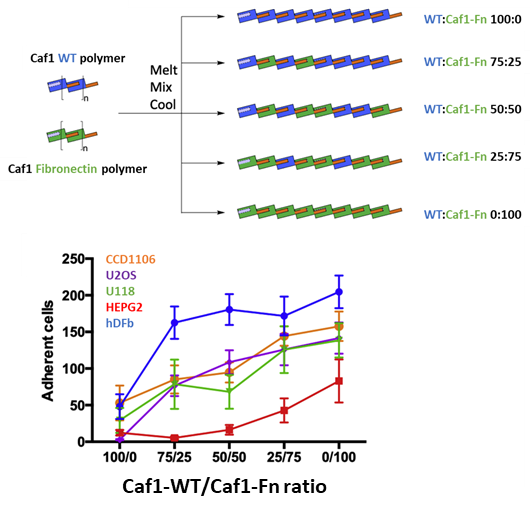 Add My Company
Add My Company
FIBRONECTIN Caf1

Caf1-Fibronectin mimics the action of the extracellular matrix protein fibronectin, providing an adhesive surface for cells to stick to. Caf1-Fibronectin supports the growth of multiple cell types, including mesenchymal stromal cells (MSCs) and human dermal fibroblasts. Fibronectin-Caf1 benefits from the modular nature of the Caf1 polymer, combining easily with other types of Caf1 subunit to create multifunctional polymers or tune the level of cell adhesion.


Caf1-Fibronectin hydrogels support the growth of human dermal fibroblasts. Hydrogels of non-adhesive Caf1 wild type (Caf1- WT) and adhesive Caf1- fibronectin were constructed in wells of a 24-well plate. Cells were seeded on top of the hydrogels and grown for 7 days before staining and visualization using a confocal microscope (green - live cells, red - dead cells). Right: Caf1-Fibronectin coated surfaces support the growth of human MSCs. Wells of a 24-well plate were coated Caf1-Fibronectin or recombinant fibronectin or left uncoated. Wells were then seeded with human MSCs and grown for 7 days, with cell counts measured using the PrestoBlue assay.
Mosaic Caf1 Polymers

Mosaic Caf1 polymers that contain more than one type of subunit can be easily made through thermal refolding of the polymers. Here, non-adhesive Caf1 wild type (WT) was mixed in different ratios with adhesive Caf1-Fibronectin, and used to coat surfaces of a 96 well plate. Cells from different cell lines were then seeded onto the surfaces and grown for four hours before fixation, staining and counting. The number of adherent cells was proportional to the ratio of Caf1-Fibronectin subunits in the polymer.
For more information on FIBRONECTIN Caf1 talk to TCS Biosciences Ltd
